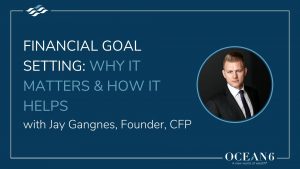If you’re looking to engage a financial advisor, one of the things that will come up is the subject of fees. After all, we all want to know exactly what we’re paying for.
With that in mind, one of the common fee-related questions people ask is, “What am I getting in return for the financial advisor fees I’m paying?”
What is the Value in Paying Advisor Fees?
We’re going to dive into these answers in greater detail, but consider this to start. The most critical question you need to ask yourself when it comes to paying fees is this: “Is there more value in it than cost?”
And if you think about it, you’ll realize this is a question we’re all asking ourselves regularly. One example being when we choose between Ubers and cabs.
Without explicitly saying so, Uber expertly highlights everything that sucks about taking a traditional taxi while pointing out why their service is superior.
They point out features like:
- One tap and a car comes directly to you
- Your driver knows exactly where to go
- The payment is completely cashless
Because of value-adds like this, clients won’t hesitate to pay a slightly higher fee at peak hours.
Sure, there are times taking a cab may be less expensive than an Uber. But at the same time, you might be left telling the driver where to go, not knowing when they’ll show up, and wasting an extra couple of minutes paying for the ride.
Paying Fees on Investment Products
Now, let’s look at two examples of how the same logic applies to paying fees on different investment products and paying advisor fees.
For our first example, consider this question I get all the time: “Should I invest in ETFs because of their lower fees, or are Mutual Funds worth it?”
To clarify, the fee we’re referring to is the Management Expense Ratio or MER. This is the fee paid to the ETF or Mutual fund company for their services.
As for the answer, it depends on the value you are getting from paying that fee.
Take for example ETF A which charges 0.4% versus Mutual Fund B which invests in the same thing but charges 1.4%. Much like our cabs versus Uber analogy, they are both working on accomplishing the same thing. But one simply charges more.
So, is it worth it? Which is the better choice?
From a cost perspective, the answer is simple: the ETF charges 1% less. However, what if ETF A made you 11% over the past 10 years and Mutual Fund B made you 15%?
In that case, paying that extra 1% looks a lot more logical. Or in other terms, the cost is justified because you’re getting more value for the price.
Watch the video on this strategy
Find Out What You’re Getting for Advisor Fees
For our next example, let’s consider something aside from management expense ratios: What are you paying in advisor fees and what are you getting out of it?
In our industry, it’s common practice that clients are charged a fee for investing in a product while being told they will be given the financial planning advice they need. The problem is, far too often, they don’t receive proper advice. Ultimately, the expected value for the advisor fees comes up short.
This is one reason it’s so important to work with financial advisors you trust.
If you need money management advice, pay for it! And if you need financial advice, pay for that. Paying advisor fees or investment fees is to be expected. But, you need to be clear on what you are paying for and who you are working with.
It’s because of this disconnect between what clients pay for and what they need that fee-for-service financial planning is becoming a very popular choice.
Ultimately, it comes down to this: if you need financial planning, make sure you’re getting value for the fees you are paying.
If you are excited about your financial future but don’t have a plan and want to ensure you are getting the right value to cost ratio, book a call. We would love to help.












